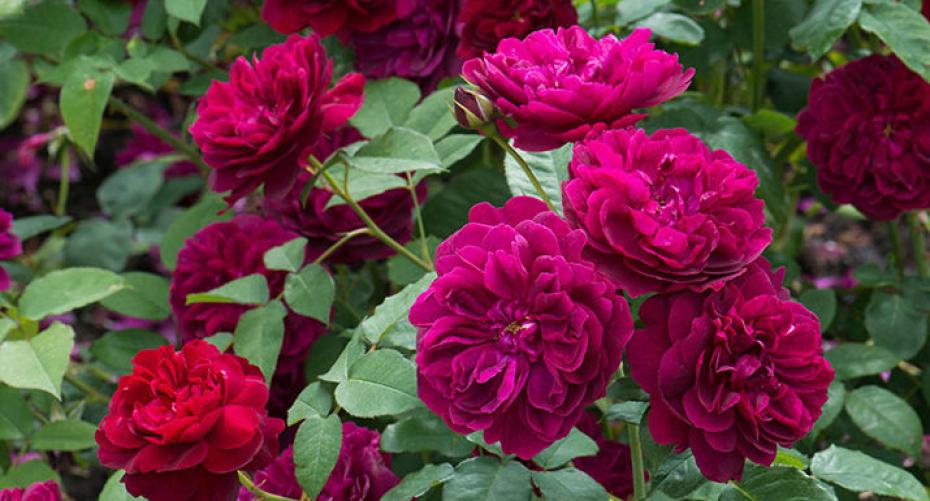Tiny garden? Fill it with scent and colour by choosing compact plants
Darcey Bussell (pictured above)
Having a small garden is no barrier to having a lot of scent and colour, just make sure you stick to small compact plants which can be kept under control and won’t overtake everything else. David Austin recommends these 6 particular roses as they only grow to a height of about 90cm (3’) and produce a profusion of gorgeous full petalled blooms, flowering from early summer into autumn. They are also scented, albeit ranging from really strong to quite mild. The trick is to plant the heavily scented varieties near a seat or path where you can enjoy their aroma to its full potential, and the less scented at the back of a border.
Try pairing them with perennial geraniums, violas or the small English lavenders, Hidcote or Munstead, for that quintessential cottage garden look. Many of these small roses will thrive on poor soil but if you can enrich it when planting and mulch annually with good quality compost and well-rotted farmyard manure then they will perform much better.

Anne Boleyn
Position
Most of these roses will flower quite happily in a little shade but ideally they need to be in full sun. Don’t choose a very windy spot otherwise their blooms tend to become tattered and won’t last as long as they would normally. If your soil is really heavy clay and poorly drained in winter then they would probably be better off growing in a large container.

Desdemona
Planting
A moist, humus rich, well-draining soil is ideal but few of us have these conditions, so a little bit of preparation before planting is usually necessary. Bare rooted roses are planted from late autumn to late spring when they are dormant and soil conditions are favourable, but container grown plants can be planted at any time of the year. If planting bare root roses dig a hole about 60cm (2’) across and deep, containerised roses just need a hole roughly the same size as the pot.
Mix in some good quality compost with the excavated soil and about a bucketful of well-rotted farmyard manure. Spread out the roots and sprinkle with a mycorrhizal fungi, such as Rootgrow, don’t use a fertiliser with the fungi as the phosphorus in the fertiliser prevents the fungi from working. Place the rose into the hole and plant it so the grafting point is level with the soil surface. Back fill with the enriched soil making sure to avoid leaving any air pockets. Once planted water well.

Harlow Carr
Aftercare
Make sure it is well watered for the first year after planting, after which it should have formed a good root system and be able to find its own moisture. Feed with a dedicated rose fertiliser, such as Toprose, each spring, water it in then mulch with well-rotted manure or good quality compost. Prune in early spring to about 20 – 30cm (8 – 12”) above ground level; cut just above an outward facing bud. You can also prune lightly in October if it has finished flowering; this will just reduce any movement in the winter winds.

Young Lycidas
For more gardening advice just get in touch with our team in the Outdoor Plant department.
Images courtesy of David Austin. There are filters on the David Austin website which ensure you get exactly what you want; colour, size, form and scent.


